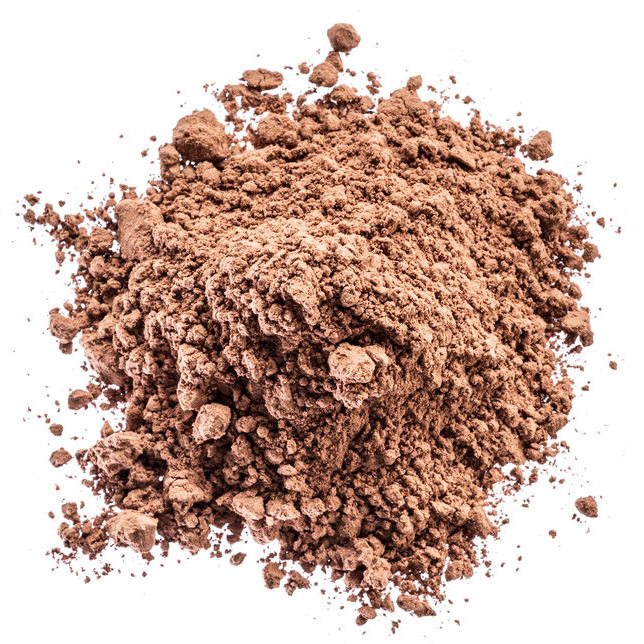
Carob Powder
What is Carob Powder?
Carob powder, also called carob flour, is a chocolate colored powder made from grinding roasted carob seeds. It is used in foods, beverages and bakery systems as a:
- Substitute or extender of cocoa powder
- Natural sweetener
- Thickener and gelling agent
- Low cost stabilizer
- Good source of dietary fiber and antioxidants (polyphenols)
- Component of gluten-free formulations
Origin
Carob (Ceratonia siliqua L.) is the fruit of locust bean, a plant originally cultivated in the Mediterranean area and Middle East. Its use dates back to the Egyptian times where the pods were used as animal feed.
Locust trees are grown in areas that are also well-suited for citrus plants and can grow up to 55 ft. It takes up to fifteen years for the trees to establish themselves before producing the sweet carob fruit.
Function
One of the most important aspects of carob flour is its ability to replace chocolate in baked products as a cost-saving ingredient which can also eliminate caffeine as well. A one-to-one carob flour to chocolate ratio replacement has been demonstrated in many baked goods. However, it’s recommended that the amount of sugar be reduced and fat increased to compensate for the differences between carob and cocoa powders.
Other desirable functional properties of this flour in baked goods include:
- Improving flour dough elasticity
- Increasing dough resistance to deformation
- Non-allergenicity of carob protein
- No added caffeine unlike cocoa
Commercial Production
Carob powder can be prepared commercially by:
- Harvesting carob pods
- Washing and cleaning
- Boiling and splitting open the pods to remove seeds
- Roasting and grinding
- Drying powder
- Sifting and packaging
Composition and Nutrition
The following Table highlights the nutritional profile of carob flour/powder:1,2
| Nutrient | Amount Per 100 g |
| Carbohydrate | 88.88 g |
| Fiber | 39.8 g |
| Protein | 4.62 g |
| Water | 3.58 g |
| Ash | 2.27 g |
| Potassium | 827 mg |
| Calcium | 348 mg |
| Phosphorus | 79 mg |
| Magnesium | 54 mg |
| Sodium | 35 mg |
This powder is claimed to provide many health benefits such as:
- Relief from diarrhea, stomach pain and gastrointestinal discomfort
- Reduction of regurgitation in Infants
Application
Carob powder is most commonly used as a chocolate substitute and sweetener in baked goods including breads, cakes, and cookies. Also, it’s found in noodles, candies and gluten-free baking recipes.
The unique taste of carob powder can provide sweetness to white flour. Meanwhile, its ability to strengthen dough has been used effectively in rice flour-based bakery products. In multigrain breads, the addition of carob flour can increase water absorption and reduce dough stickiness.
Other applications of this flour include its use as a brown coloring ingredient.
FDA Regulation
Carob powder or flour is not regulated by the FDA. However, carob bean gum is considered ‘GRAS.’ FDA guidance on the bean gum can be found in 21CFR184.1343.3
References
- Carob flour. https://fdc.nal.usda.gov/fdc-app.html#/food-details/173755/nutrients. Last accessed by April 01. 2019.
- Carob powder: 9 nutrition facts and health benefits. https://www.healthline.com/health/food-nutrition/carob-powder#1. Last accessed by Jan 15. 2020.
- CFR – Code of Federal Regulations Title 21CFR184.1343. Accessdata. Fda. gov. April. 01. 2019. https://www.accessdata.fda.gov/scripts/cdrh/cfdocs/cfcfr/CFRSearch.cfm?fr=184.1343. Last accessed by Jan 15. 2020.

